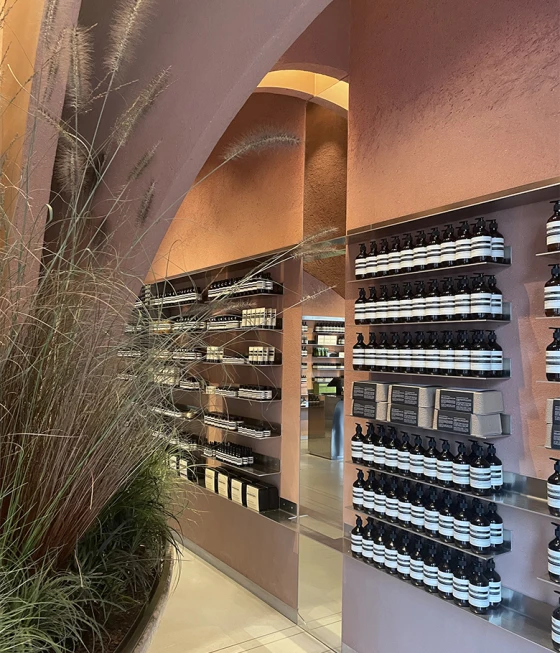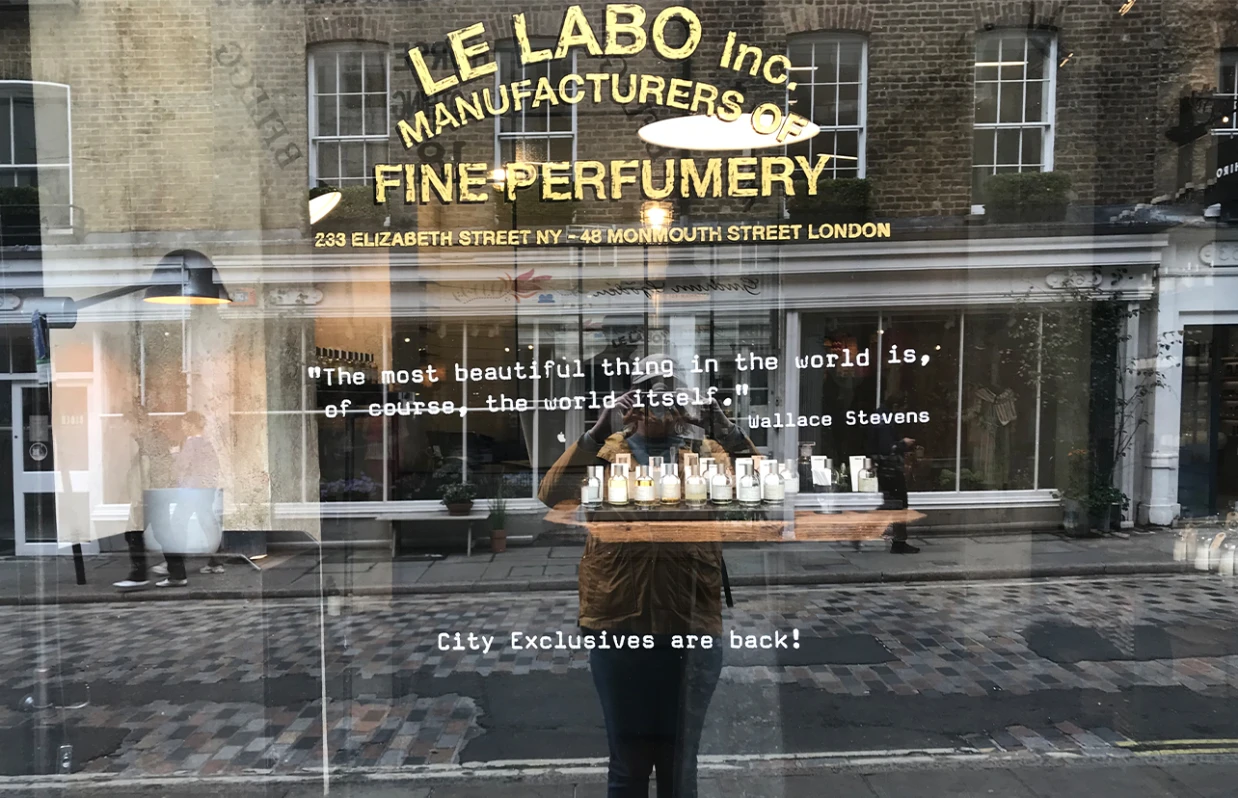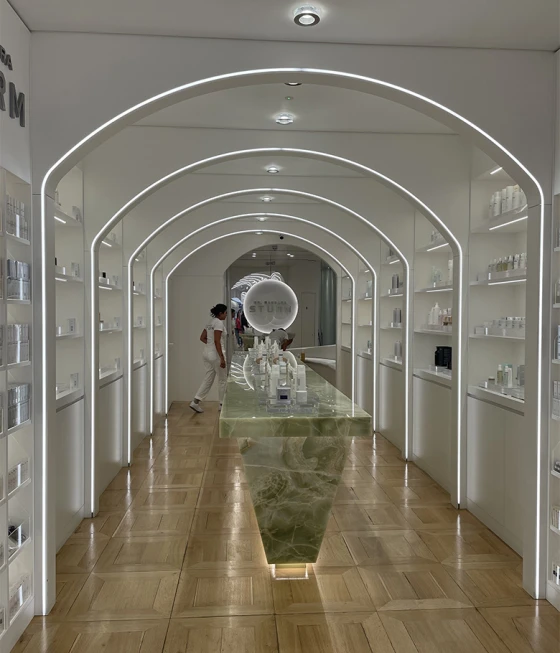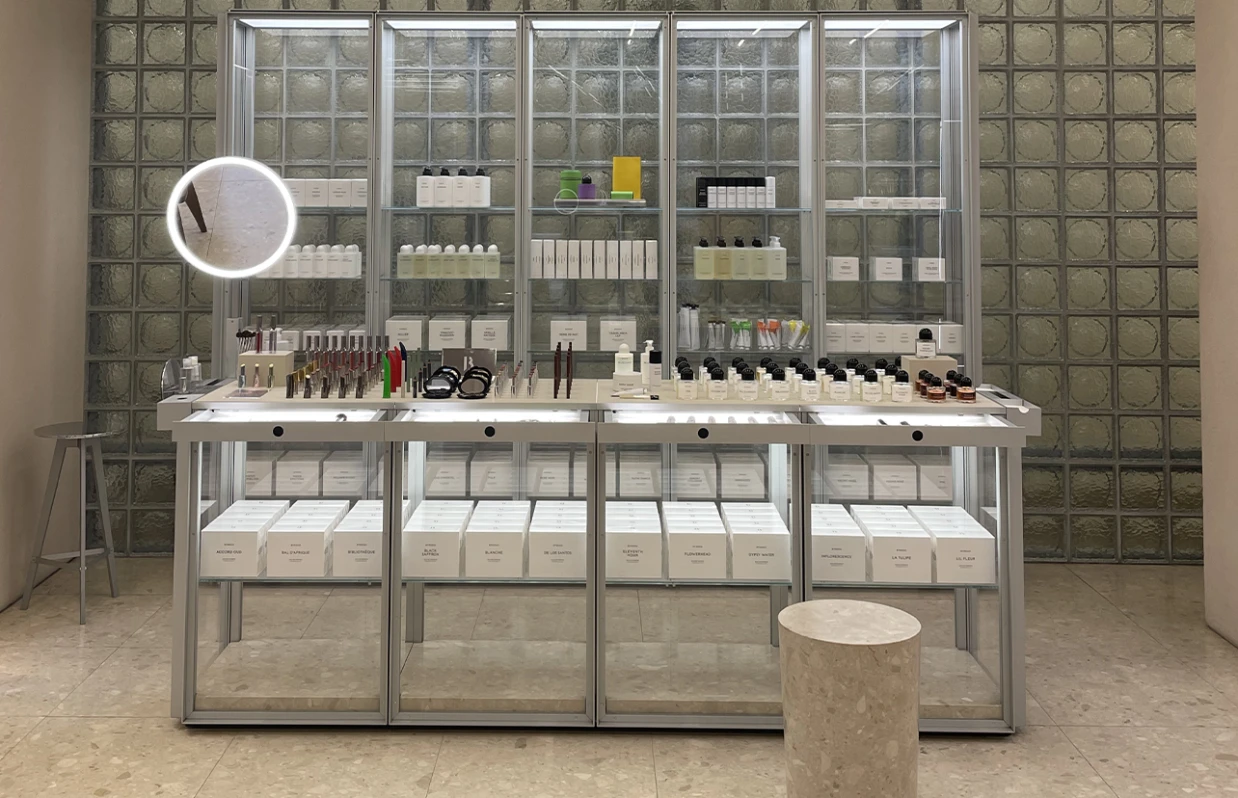Aesop, Duke of York St, London. Merchandising at its best.
The Future of Beauty Retail
Opinions
Glossier flagship, Covent Garden, London. Immersive, sensory retail.
A huge challenge facing businesses in all retail categories right now is how to bring customers back into their stores.
Lockdown saw online sales shoot up in an unprecedented way in the beauty industry in particular, yet huge international brands are still committing to a bricks and mortar presence – and we wanted to figure out why.


Le Labo, Covent Garden, London. “The future of luxury lies in craftmanship”
The team headed to London for a look around to check out the latest and greatest in retail.
The team headed to London for a look around to check out the latest and greatest in retail.
We did our research, and had a list of must-see new venues and events, with a particular focus on movements in the beauty industry. For most of us, online shopping became the norm, and some of us stopped wearing make-up at all. Why would we go back to a department store? Especially since social platforms allow everyday people to promote brands, provide online tutorials on skincare and make-up applications.
Brands like Glossier, which started as an online platform and have a huge following, are still opening retail spaces. We made our way to their Covent Garden store to see how they had executed their flagship store for London.
On arrival, there was a queue. They even had someone manning the door, such was the buzz around the place. Was there a celebrity visit happening? Nope. Just a regular Saturday. So why the excitement?

Dr Barbara Strum, Mount St, London. Skincare that embraces individuality.

Byredo, Lexington Street, London. A renewed approach to modern luxury.
Stepping into the beautifully lit, perfectly merchandised store it became clear.
Stepping into the beautifully lit, perfectly merchandised store it became clear.
Customers were fully engaged with the product. Immersive, sensory retail was being delivered through thoughtful design of the customer journey. Mothers, daughters, and groups of friends from all walks of life, all applying make-up to themselves and one another in ‘you look good’ branded mirrors. There was no denying it felt like a grown-up playground, a real beauty scene. Quite different from the beautifully designed Aesop stores that we designers often fall in love with – beautiful, yes, but you rarely see another soul in them when you’re there.
It’s also worth noting that many boutique outfits are specialising in custom-made scents, not only for individuals and special occasions. Say, for instance, an international hotel group that wants to project their scent across the globe and have it as part of their whole brand experience.
Part of New York brand Le Labo’s manifesto is ‘too many bottles of perfume and not enough soulful fragrances’. We as consumers like to get in amongst beauty products – the trying, the testing, the smells. Nothing compares to the human touch when it comes to facials, massage or make-up applications. If you receive the wrong foundation in the post, once it’s open, it can’t go back.
The introduction of beauty rooms has allowed bigger department stores to address this element and provide private consultation spaces which cater for customers with long and short beauty ‘to do’ lists. Gen Z, the soon to be largest consumer group globally, are the most tech savvy generation, having grown up always knowing the internet. Yet in-person beauty seems to be the shopping experience they prefer. They may do research online or through social media but mostly they are looking for an authentic retail experience.
Magic mirrors which digitally map customers’ features so they can try on different products without touching their skin are beginning to appear, complementing the face-to-face consultation with a skincare specialist or make-up artist. Nail bars, beauty institutions, even tattoo and piercing studios are appearing on the high street. They are bringing with them a sense of community. Experiences within the store help to form relationships with beauty gurus on a one-to-one basis and create a sense of loyalty towards a person or a brand.
Providing tutorials, group thought labs and expert talks are all proven ways to engage and to instantly garner a halo effect through social media channels. Those elements develop further notoriety and points of difference among the many brands on the market. They help the customer feel more rooted in the brand and part of the brand journey. It doesn’t stop with the flagship stores, either: The no-frills pharmacies are realising that a more inspiring, customer-centric experience is critical to gaining customer loyalty. All of this suggests that the longevity and future of beauty businesses does depend on a human connection. In a beauty industry context, ‘try before you buy’ is here to stay.